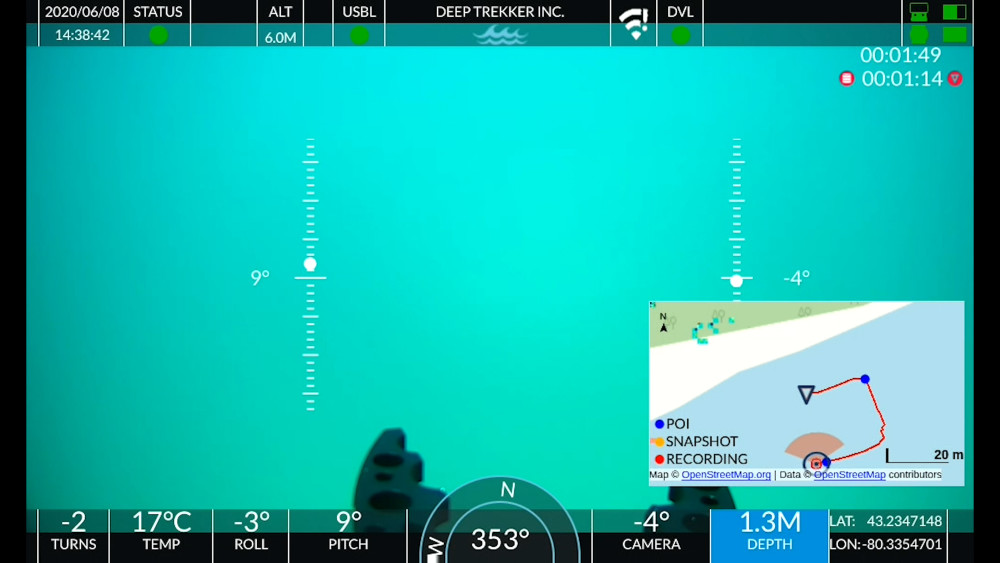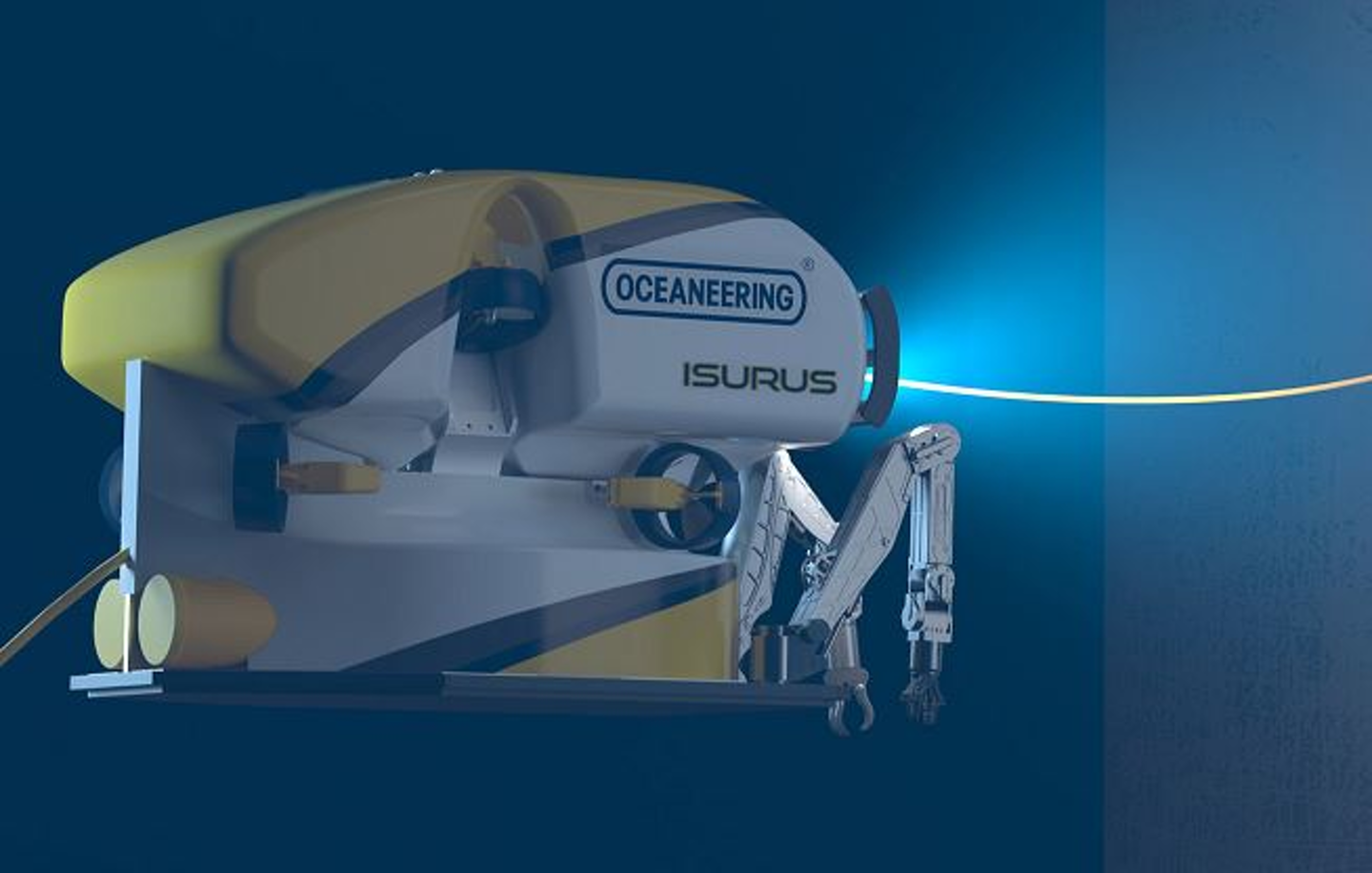Home › Forums › ROV › Self/Home Build ROV Discussions › Drive Motors
- This topic has 3 replies, 1 voice, and was last updated 17 years, 8 months ago by
Gina McLauchlan.
-
AuthorPosts
-
September 16, 2006 at 6:53 pm #140
Gina McLauchlan
ParticipantThis is one carried over from the old forum
can anyone give me info on what propulsion motors to use on my r.o.v.
it is only going to be for filming to a depth of approx 300m
many thanksSeptember 16, 2006 at 6:54 pm #7798Gina McLauchlan
ParticipantThis is one carried over from the old forum
What type of power will you need, i.e. size of vehicle? Electric or hydraulic?
September 16, 2006 at 6:56 pm #7799Gina McLauchlan
ParticipantThis is one carried over from the old forum
That is a bit like asking ‘what sort of car should I buy’. You need to define your requirements a little better – lets go through some of the things you need to take into consideration.
First of all, are you looking for bare motors, or complete thruster units? If you want complete units stop reading here, go to the links page and look up a few companies.
If you are doing it all your self, the first thing to consider is the size of ROV – you are thinking in terms of just a mini board camera and a couple of 12v lights it can be quite small (take a look at Videoray for inspiration.) If you need a ‘proper’ underwater colour zoom camera and a few hundred watts of light, it is going to be bigger. Also take into account that the ROV has to drag the umbilical behind itself – with 300m + of cable a mini ROV probably won’t be able to move, and certainly won’t deal with any sort of current. My guess is that you will probably land up with a vehicle about .5 -.75 metre cube – about the size of a Hyball or Seaeye Falcon. For a vehicle this size you are looking at motors of 500-800w each.
The next thing to consider is supply voltage. A vehicle like this isn’t going to run on 12 volts (it would need about 200amps, what diameter would the umbilical be?) Typically you would decide to supply the vehicle with something between 250 and 450 volts to minimise losses in the umbilical. There are three commonly used ways of doing this, and the choice affects the type of motor you use:
1. If available use 415V three phase. This means you can use industrial induction motors, which are cheap, rugged and reliable.
2. Use high voltage DC to drive high voltage brushless DC motors (this is the system used by Seaeye, it gives superb control, but is probably the hardest and most expensive to implement as a home builder).
3. Supply high voltage single phase, then use a transformer on the ROV to drop the voltage, You can then use low voltage DC motors of some sort.Be aware that there are MAJOR safety implications if you use a supply voltage over 50v. The system must be designed and built under the supervision of a competent engineer, working to AODC 035 ‘Code of Practice for Safe Use of Electricity Under Water’ (available from IMCA) and will have to incorporate additional safety devices such as a line insulation monitor.
Types of motor to consider:
1 3 phase induction. These are cheap, rugged and reliable, but do need a 3 phase supply.
2 DC brushless motors, high or low voltage. These are the ‘bees knees’ in terms of controllability – with a brushless motor you get genuine speed control, with anything else you actually control the torque. They are also very reliable, but are expensive, and often have control electronics built into the motor, which will be destroyed if the motor gets flooded with seawater.
3 DC brushed motors. Cheap and cheerful and easily available, but they have some disadvantages: To get decent power out they have to run fast, which means the added complication of a gearbox to give a sensible prop speed. The carbon brushes wear, which means maintenance, and can cause problems if you run the motors in oil.The next thing to think about is how you are going to deal with the pressure at 300m. Again there are three common solutions:
1 Magnetic couplings: The motor is in a sealed pod at atmospheric pressure, there is no shaft coming out, so no seals are needed. Very difficult to build your own, but I have read of homebuilders using commercial bilge pump motors and couplings for thrusters ( I remain doubtful that a device designed to work in a few inches of water can withstand 30 bar, but have no personal experience so won’t comment)
2 Motor in atmospheric pressure air. This requires a shaft seal that will withstand the water pressure. A ceramic mechanical seal (commonly referred to as a Crane seal) will do this, but they are expensive and delicate. Make sure you design the ROV so that if a seal bursts it only floods the motor, not the whole electronics/camera housing (ordinary stranded wire will act as a hose pipe with 30 bar pressure differential)
3 Run the motors oil-filled and compensated. I think James has explained the principles of compensation in a post on the old site, so I won’t go into details. If the motor is running in oil at ambient pressure, you can use ordinary rubber lip seals to keep the oil and water separate. Most motors will run in oil (choose a very light grade hydraulic oil, or WD40) but avoid motors with sealed or nearly sealed cases, as you don’t want any trapped air inside. An added advantage of this system is that the motor cooling is dramatically increased, so you can usually overdrive them by 30-50%. A disadvantage, if using DC brushed motors, is that arcing at the commutator will carbonise the oil, making it conductive. This means you will need frequent oil changes.Having sorted your motors, you will then have to think about props and nozzles – appropriate size/pitch boat props will work, but are only efficient in one direction. (An ROV that will do 4 Kts left but only 1/2 Kt right is a bit frustrating) You could make your thrusters double ended, so that one prop is working efficiently and one in reverse, whichever way you are going, or you could get symetrical props moulded/cast.
I hope all this hasn’t put you off, unfortunately if you want an ROV that will do anything useful at 300 metres this is the path you are going to have to take. If this is for a college project or hobby, it might be worth considering reducing your depth requirements – cost and complexity seems to be proportional to depth cubed. You could certainly build something that will work to 50 (possibly 100) metres running from a 24 or 48 volt supply.
Good luck, keep us posted on progress, and if you need more help, ask.
September 16, 2006 at 6:59 pm #7800Gina McLauchlan
ParticipantThis is one carried over from the old forum
Hi Sumpguru
Just dug out the old post you mentioned.
~~~~~~~~~~~~~~~~~~~~~~~~~~~~~~~~~~~~~~~~
Eric
Sealing and pressure compensating a DC brushless motor from a common appliance.
First ensure that the motor casing is watertight. You may need to replace the end plates to achieve this, or put the whole motor in an oil filled housing.
The shaft will need to be sealed with lip seals.
A lip seal will prevent oil leaking from the housing, but I would also suggest a double lip seal arrangement to help prevent water ingress when the shaft is rotating at high speeds.
So ‘back to back’ the lip seals with one seal sealing against water ingress (Compensated or not this has been known to happen) and one seal sealing against oil egress. In other words both flat faces of the seals should be face to face.Install a bleed point on the top of the motor housing and a drain/fill point on the bottom.
Then, using a length of low pressure tube, connect the housing to a pressure compensator (a simple rubber bladder will do) even a bladder from a football or similar.
Use anything that has a reasonable wall thickness and can expand when pressurised. There are commercial spring loaded compensators available but, price wise, they may be out of reach of your budget.Fill the housing, bladder and tube with oil, through the lowest port ensuring that you have no air in the system. Open the port at the highest point to allow air to excape. Once the system is air free, close the bleed port (highest port) and over pressure the bladder with oil by about 14 psi (1 bar).
The cheapest way to fill your sytem is with an adapted garden spray bottle of the type that you pump air into to pressurise. Fit an LP guage to the fill line, and mark it at 1 Bar as your maximum pressure.
The way the compensation works is this…. because of the presence of the compensator, when the motor is submerged…. no matter what depth it is at, the internal pressure will always be about 1 Bar (14.7psi) over ambient pressure (i.e. The external pressure exerted by the water at any given depth).
Should a leak occur, the 1 Bar (14.7psi) over ambient internal pressure helps ensure that water will not enter the motor housing and burn the motor out. This pressure will slowly reduce as oil is lost from the system.
A camera with the ability to view the ‘pressure compensator’ is a good idea. Oil leaks normally occur as a result of worn shaft seals. If you test the unit before diving you should spot any leaks ahead of time.
You can hook up more than one motor to the bladder (pressure compensator) and get away with using one compensator for all your motors by connecting them to a common manifold.
Technically, with this system, depth is not an issue as far as the motors being protected and able to operate is concerned.
Dan Fjellroth’s website is a good resource for home builds.
Go to http://www.ROV.net then ROV FAQ and look for ‘Build your own ROV’.~~~~~~~~~~~~~~~~~~~~~~~~~~~~~~
Eric… if you need more input please tell us what type of system you are trying to build.
regards
James Mc -
AuthorPosts
- You must be logged in to reply to this topic.



